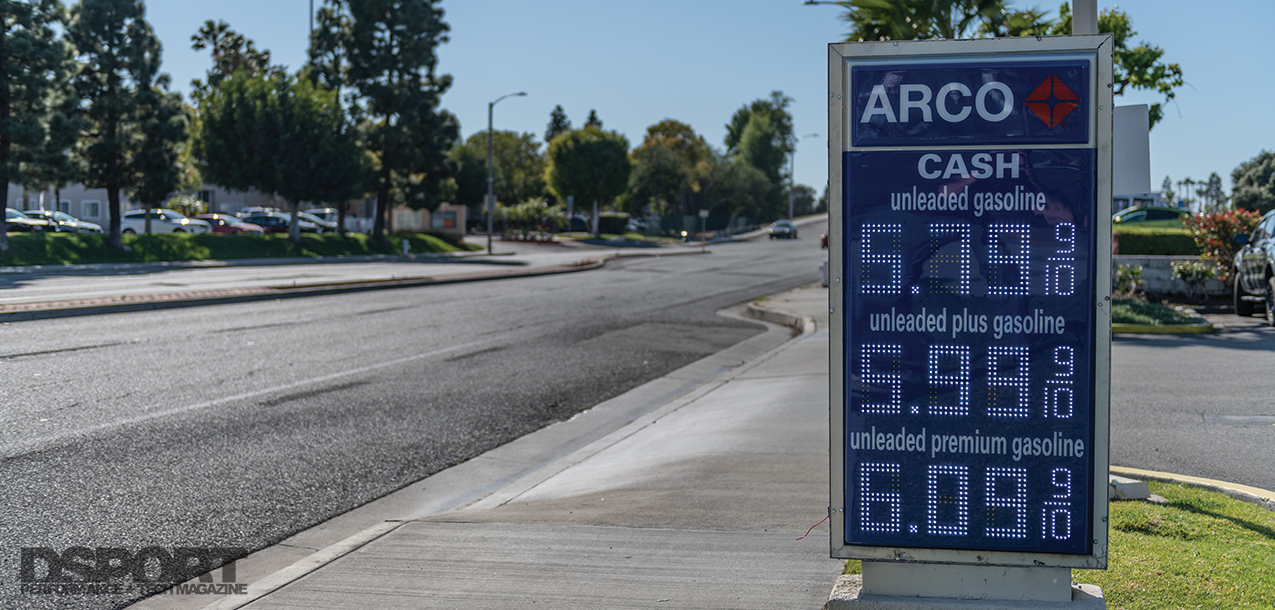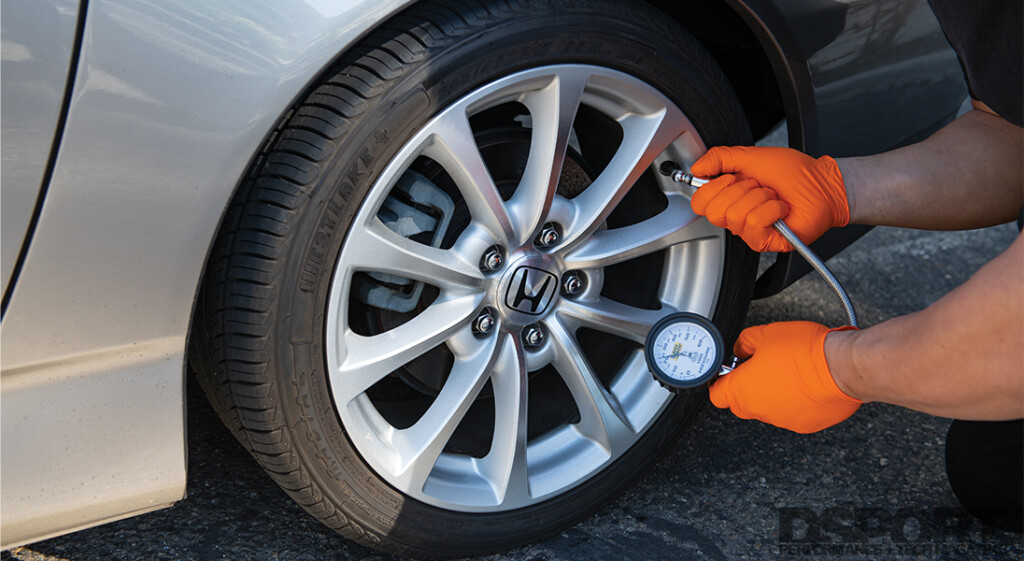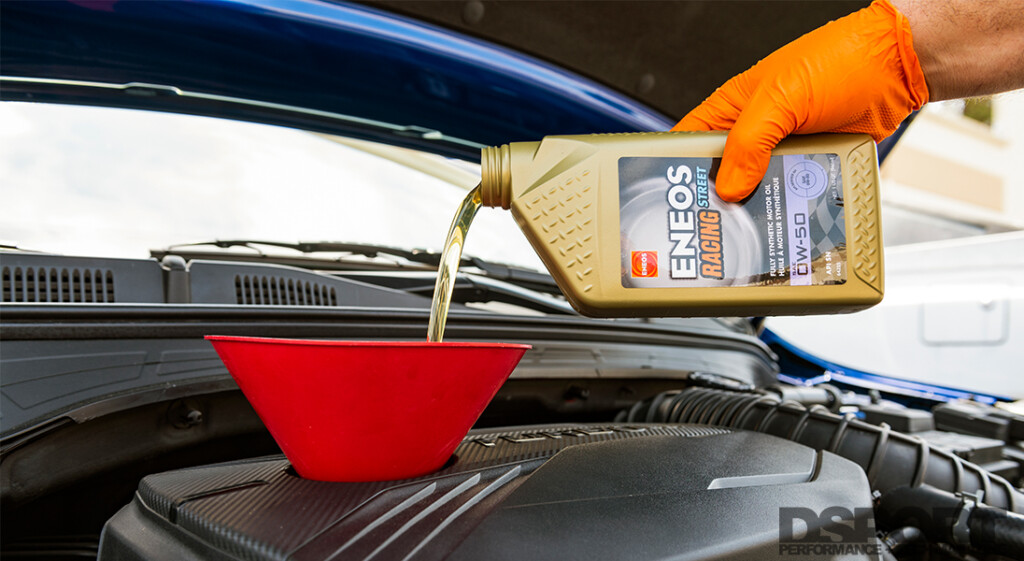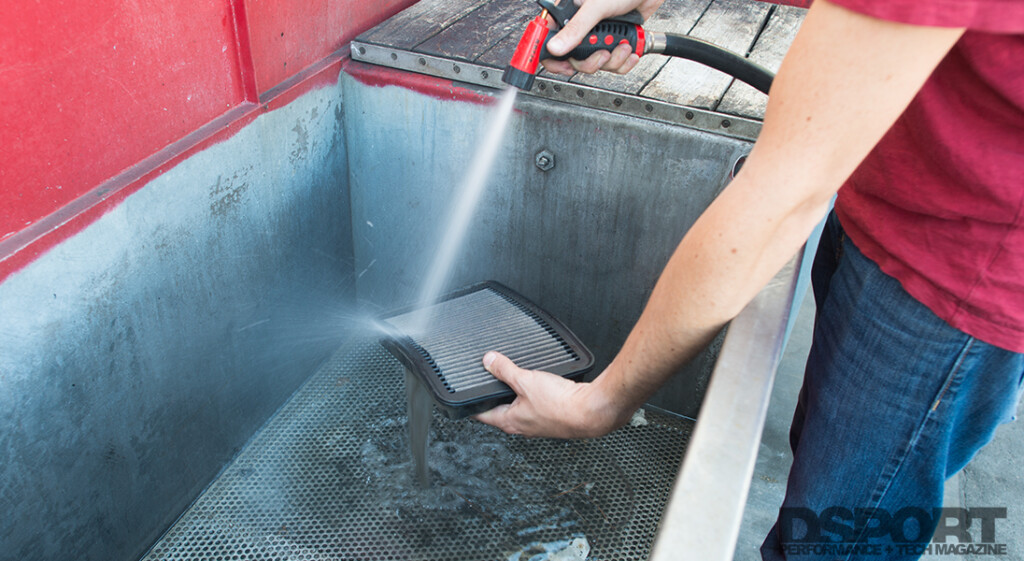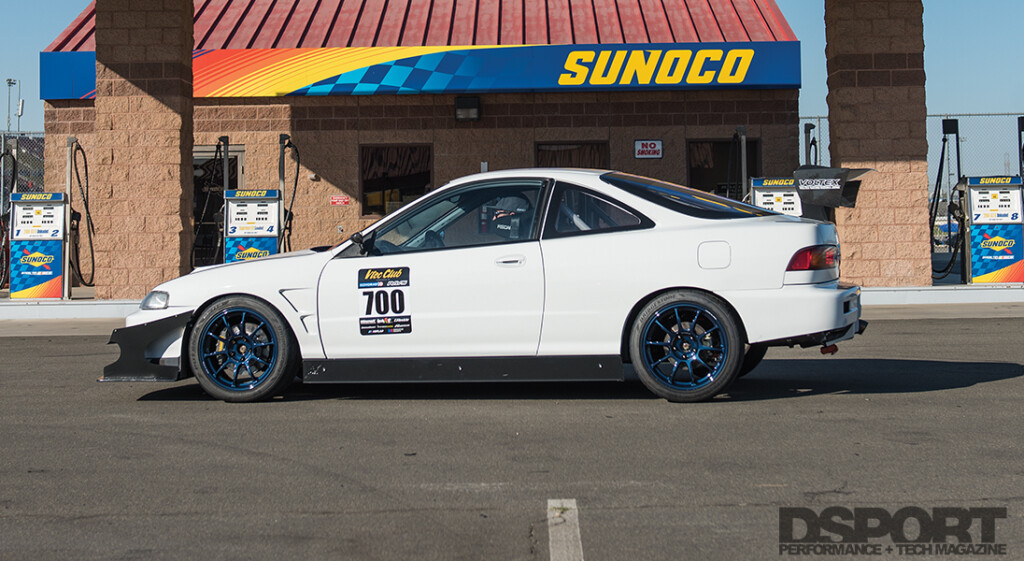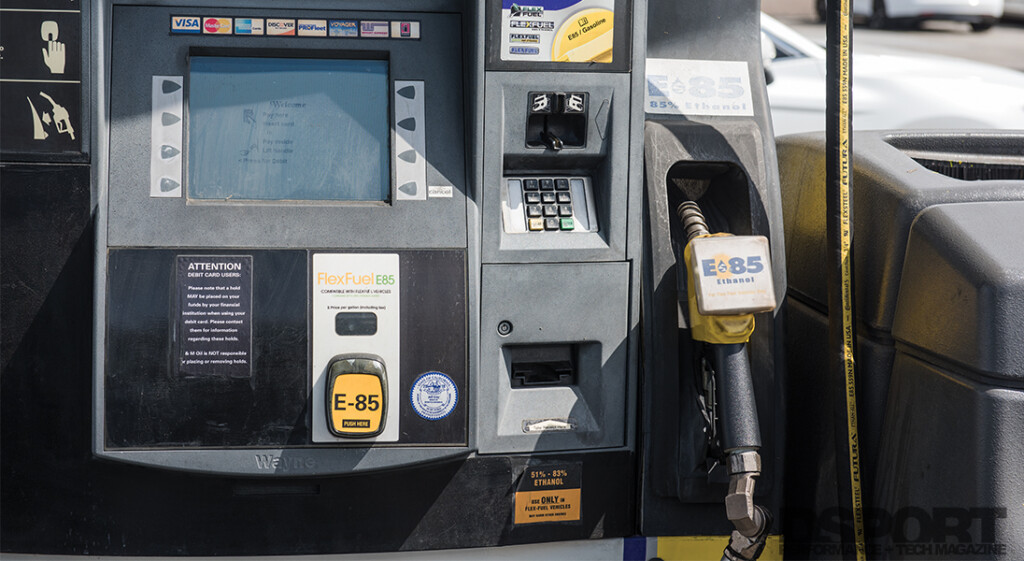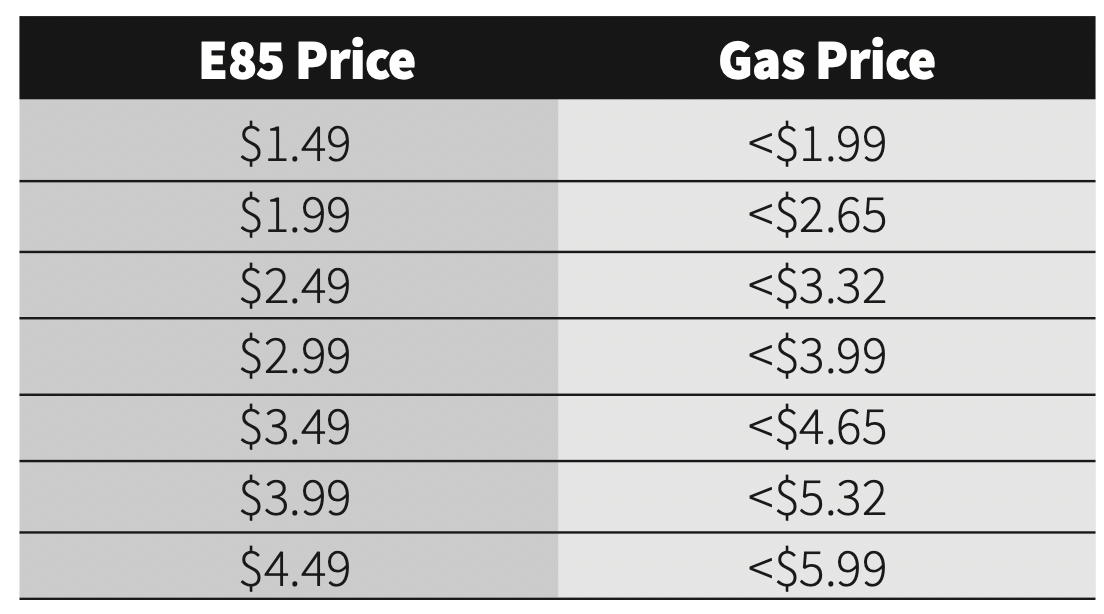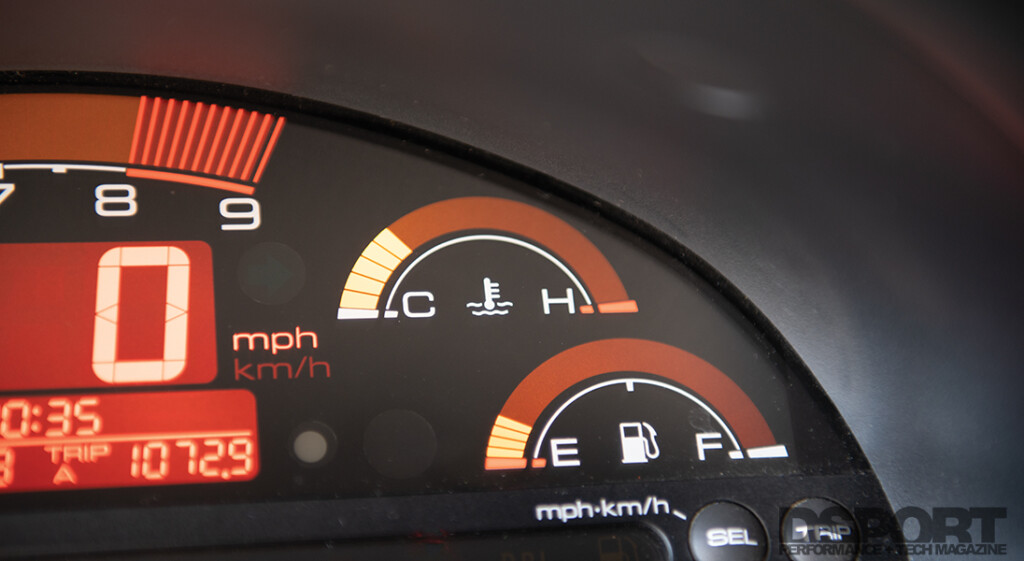We are looking forward to the promise of having an average gas price over $6 per gallon in the next two weeks right now in California. Sanctions on the importation of Russian oil is pushing crude prices through the roof. While Californians are hit the hardest, residents of all 50 states are feeling the pain at the gas pumps. While we are normally revealing all the secrets to make more power, we decided that we all own a vehicle that we’d like to see get some better fuel economy right now. So here’s a refresher on the 10 best ways to save fuel.
Text by Michael Ferrara // Photos by Joe Singleton
DSPORT Issue #244
1. Optimize Tire Pressure
Ever try to pedal a bike with tires that are nearly deflated? Remember how much easier it was to pedal with the proper amount of air in the tires? Your car’s engine has the same problem accelerating a car with underinflated tires. More energy and more gas is wasted because rolling resistance is increased with lower than recommended air pressure. The ideal cold air pressure for maximum fuel economy is going to be the maximum recommended by the tire manufacturer (found on the sidewall of the tire). However, this may be higher than the recommended tire pressure specified by the car manufacturer. The car manufacturer’s recommended pressure is based on the estimated driving weight of the vehicle with the OEM tires so don’t worry if it’s lower. Look at the tire and if the tire wear is not even (it will be more worn in the center if inflation pressure is higher than ideal for tire wear), adjust accordingly.
FACT: When tires are inflated to only half of the recommended pressure, fuel consumption increases by 5 to 10 percent. If the inflation pressure is only 75 percent of recommended, fuel economy will be 2-4 percent lower.
2. Use High-performance Engine, Trans and Diff Oil
By reducing friction and optimizing viscosity, less power and energy is wasted overcoming friction and flow resistance. High-performance, full-synthetic oils with optimized additive packages reduce the amount of friction. Reduced friction lowers energy consumption. By optimizing the oil viscosity for the application, sufficient protection can be obtained without the need for higher-viscosity lubricants that require more energy to circulate.
Moving from a 10W-30 to a premium, fully-synthetic 0W-30 oil will provide the same or better engine protection while requiring less power to circulate
FACT: Friction-reducing engine, transmission and differential lubricants of the proper viscosity can reduce fuel consumption by 3 to 5 percent.
3. Install Ruthenium or Iridium Spark Plugs
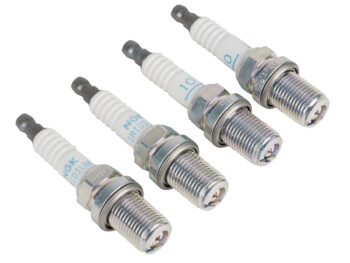 Misfires result in reduced fuel economy and performance. Shortening the service interval for spark plug replacement and using premium spark plugs can significantly reduce misfires. Premium Ruthenium and Iridium spark plugs offer exceptional service life while also reducing the voltage requirements for spark initiation. Essentially, these plugs make it easier for the rest of the ignition system to get the job done.
Misfires result in reduced fuel economy and performance. Shortening the service interval for spark plug replacement and using premium spark plugs can significantly reduce misfires. Premium Ruthenium and Iridium spark plugs offer exceptional service life while also reducing the voltage requirements for spark initiation. Essentially, these plugs make it easier for the rest of the ignition system to get the job done.
FACT: New technology spark plugs can improve fuel economy and performance on the order of 1 to 3 percent versus a set of new conventional spark plugs. When spark plugs are worn or have failed, fuel consumption can increase by 30 percent.
4. Clean Air Filter
Dirty or clogged air filters limit the amount of air that can fill the cylinders at a given throttle and boost pressure. While the latest engine ECUs can make fast fuel corrections to compensate, older ECUs may keep the engine running more fuel rich than ideal. By keeping your engines air filter clean (it’s estimated that 25 percent of all cars are driving with dirty air filters), the engine can work easier to make the power desired.
FACT: Dirty air filters can reduce fuel economy by up to 10 percent. Some engines will run too fuel rich with clogged air filters. Running fuel rich not only reduces fuel economy but also causes fuel dilution to engine oil.
5. No Check Engine Codes and Confirm Ignition Timing
If you have a check engine light, make the repairs necessary to turn it off. While some check engine codes won’t change how a car drives, other check engine codes will significantly affect performance by putting the engine into a limp mode. In addition to making repairs to stop the codes, it’s always a good idea to ensure that the ECU’s ignition timing reporting is in sync with the actual ignition timing on the vehicle. If the actual timing is retarded it can result in reduced performance, increased fuel consumption and high exhaust gas temps. If the actual ignition timing is too advanced, this can lead to engine damaging knock.
6. Reduce Weight
It requires energy to move weight. The heavier your vehicle and its occupants and gear, the more fuel it will take to get it from point A to point B. Some lightweight upgrades can help pay for themselves over time due to the fuel savings. Here are some ways to reduce the weight.
a. Don’t keep crap in the car
b. Change to Lightweight Seats
c. Lithium Battery
d. Carbon-fiber or FRP Body Parts
e. Lightweight Wheels
f. Ceramic Brakes
g. Remove Spare Tire
h. Remove floor mats
FACT: For a typical combined driving cycle, reducing a vehicle’s weight by 100 pounds will save a gallon of gas for every 1,300 miles driven. Reducing the weight by 200 pounds will save a gallon of gas every 650 miles of driving. According to the U.S. Department of Energy Vehicle Technology Office, a 10 percent reduction in vehicle weight can result in a 6 to 8 percent improvement in fuel economy.
7. Improve Aerodynamics to Reduce Drag
Running around town with a giant wing on the back of your car isn’t going to help fuel economy. However, making sure that factory front spoilers and under panels are in good shape can help reduce drag by limiting the amount of dirty air getting under the vehicle. Exotic vehicles with properly designed flat under panels can sometimes reduce drag with reductions in ride height. By putting a tonneau cover on your pickup truck, drag can be reduced up to 7 percent in some cases.
8. Minimize Start Up / Idling
Minimizing the amount of time your engine spends idling will help to reduce fuel consumption. Remember and engine idling with a car not moving is getting 0.0 miles per gallon. It’s also better for the engine to get up to temperature quicker after start up through light load easy driving rather than idling.
9. Flex it with E85
While E85 is always cheaper than gasoline (E10) at the pump, E85 contains roughly 75 percent of the energy per gallon as a gallon of gasoline. To find out what the best option to save money, take the price of E85 and divide by 0.75. If that price is less than a gallon of gasoline, run E85. If it’s more, run gasoline to save money. For a better comparison, use the price of premium gasoline as E85 will deliver at least as much performance as premium gasoline.
Example: $2.99 for E85, 2.99/0.787=3.80; If E85 is at $2.99 per gallon it’s a better option that gasoline at any price above $3.80 per gallon.
10. Proper Oil/Coolant Temps
Running engine oil temperatures close to 100C with not only keep sludge formation to a minimum, it will also help to reduce fuel consumption and engine wear. If you have installed an additional engine oil cooler be sure that some type of thermostat is in use to not lengthen the warm-up time for the oil. Also, avoid low-temperature engine coolant thermostats. Running OEM recommended engine coolant temps will decrease engine wear.
The Bottom Line
While making the right changes to the vehicle can help dramatically (especially if your car was in a poor state of tune), how you drive can also significantly impact fuel economy. While you probably can’t take advantage of NASCAR style drafting on your daily commute, using the vehicle’s ECO mode will usually keep over zealous acceleration to a minimum. It’s always better to be on the highway instead of the city and traveling when traffic is minimal also helps. As far as driving slower, it doesn’t help so don’t be that guy on the road. Hopefully, we will get more cars on E85 and be able to get more fuel domestically in the future so we won’t have insane gas prices for too long.


